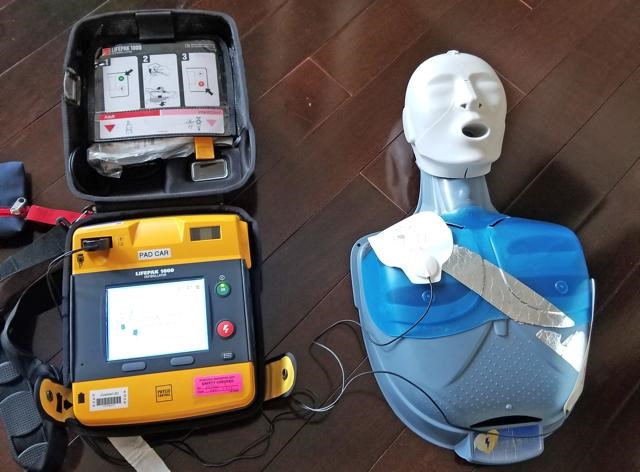Many public facilities and businesses have automated external defibrillator (AED) units, which can be used to revive a person who has experienced a heart attack. The Saskatchewan Health Authority would like businesses and anyone else who has an AED to register their location with them.
Darren Tanzell, the PAD coordinator for the Sask. Health Authority and an advanced care paramedic, notes that currently there are 10 AEDs in Weyburn that are registered with them, but he is fairly sure there are a lot more that have not had their location registered.
“The reason for that is if anyone in Weyburn calls 911, we can look up the locations of the AEDs that are registered and the dispatcher can refer the caller to that location until an ambulance can reach them,” said Tanzell, noting it is free of charge to register their location.
He can be emailed at [email protected], or phoned at his office at 1-306-766-6265, and he will send out the registration form.
“If they don’t register it and if responders don’t know that it’s there, it won’t get used,” said Tanzell.
The units have been proven to save lives, he said, pointing out that if an AED is used within five minutes of a heart attack, the survival rate is 75 per cent. For every minute afterward, there is a 10-per-cent drop in the survival rate.
“It’s one thing to have an AED, but if no one knows it’s there and it doesn’t get used, that’s a big problem,” said Tanzell.
Their staff will also provide free one-hour training for any group or business that has an AED unit, he noted.
“It’s good to have CPR training. We offer basic training to use their particular brand of AED, and how to do chest compressions,” said Tanzell, noting they can provide training for groups of up to 30 people.
If there is a group larger than 30 people, then they can divide the group up and conduct training at different times or days.
The group size limit is needed as there is a hands-on component to the training, using a training CPR doll and practicing doing chest compressions, he said.
“It takes some of the fear out of it, as people are often afraid they will cause injury,” he said, noting that with the automated defib units, they have monitors to ensure no one can provide a charge if it’s not needed.
“It automatically monitors what the heart is doing, and it looks for a certain arrhythmia, so if someone has a normal heart rate, it won’t let you shock them. You can press the shock button when it tells you to, then locks you out while it monitors the response of the heart,” explained Tanzell.
The AED units saved five people’s lives in Regina last year, and this was only possible because of the increased awareness and use of the AED units.




